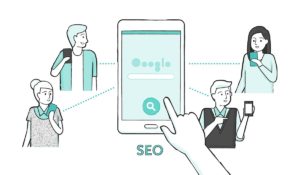Over the last few years, I’ve worked with Brian Balfour (CEO Reforge, formerly VP Growth @ HubSpot) as a Growth mentor and contributor to the Reforge programs. These are part-time programs (no need to take time off work) specifically designed for experienced Product Managers, Marketers, Engineers, and UX/Designers in both B2B and B2C companies.
Today, Reforge announced their three upcoming programs this fall:
1) The Retention + Engagement Deep Dive program. I worked closely with Brian developing this program, which looks at every aspect of retention including activation, engagement, resurrection, and churn.
2) The Growth Models Deep Dive program. This is a new, detailed examination of a key growth topic Brian and I developed this year with Kevin Kwok.
3) The Growth Series program. This is Reforge’s flagship program that provides an overview of the key topics in growth that’s been 100% revamped to reflect today’s growth challenges.
Apply to Reforge (Takes ~5 minutes)
Each Reforge program runs from September 24th through November 16th. Seats always fill up fast, and I’m excited to be involved. I’ll also be doing some speaking and Q&A during the events.
Besides Brian, Kevin and myself, other hosts include Andrew Chen (General Partner @ Andreessen Horowitz), Shaun Clowes (VP Growth @ Metromile, former Head of Growth @ Atlassian), Dan Hockenmaier (former Director of Growth @ Thumbtack), Heidi Gibson (Sr. Director of Product Management @ GoDaddy), and Yuriy Timen (Head of Growth @ Grammarly).
About the Reforge Programs
These are all invite-only, part-time programs that last 8 weeks. Each program requires a time commitment of 4 – 8 hours per week. They’re designed for Product Managers, Marketers, Engineers, and UX/Designers in both B2B and B2C companies looking to accelerate growth in their companies and in their careers by developing a systematic approach to thinking about, acting on, and solving growth problems.
In addition to the course material, we’ll also hear from leaders in the industry through interviews, live talks, and workshops, including:
Fareed Mosavat, Growth @ Slack
Ken Rudin, Head of Growth, Search @ Google
Brian Rothenberg, VP Growth and Marketing @ Eventbrite
Ravi Mehta, Product Director @ Facebook
Mike Duboe, Head of Growth @ Stitch Fix
Josh Lu, Sr. Director, PM @ Zynga
Guillaume Cabane, VP Growth @ Drift
Matt Plotke, Head of Growth @ Stripe
Joanna Lord, CMO @ ClassPass
Gina Gotthilf, ex-Growth Lead @ Duolingo
Elena Verna, SVP Growth @ MalwareBytes
Kieran Flanagan, VP Growth/Marketing @ HubSpot
Naomi Pilosof Ionita, Partner @ Menlo Ventures
Nick Soman, ex-Growth Product Lead @ Gusto
Nate Moch, VP Growth @ Zillow
Simon Tisminezky, Head of Growth @ Ipsy
Steve Dupree, Former VP Marketing @ SoFi
See the full list here
Here’s some more detail about each program below:
About the Retention + Engagement Deep Dive
Retention + Engagement Deep Dive zooms in on one of the most important sub-topics of growth.
Retention and engagement separates those companies in the top 1% of their category. Every improvement in retention improves acquisition, monetization, and virality. But moving the needle on retention is hard.
This program takes a microscope to every aspect of retention, including:
- Properly define, measure, segment, and analyze your retention
- Find and quantify the three moments every new user goes through to create a long-term retained user
- Construct a high performing activation flow from the ground up using detailed strategies across product, notifications, incentives, and more
- Layer your engagement strategies to build a compounding growth machine at your company
- Articulating retention and engagement initiatives across teams, as well as influencing how leaders think about retention in your company
- Walk step-by-step through of lessons applied to dozens of examples from companies like Instagram, Zoom, Spotify, Everlane, Airbnb, Turbotax, Jira, Credit Karma, Blue Bottle
- And more…
The Retention + Engagement Deep Dive is designed for growth professionals who are looking to zoom in on retention, either because their job is focused on retention, or because they already have an advanced working understanding of the quant and qual fundamentals of growth and are looking to build additional competency in retention and engagement.
Apply for the Retention + Engagement Deep Dive
About the Growth Models Deep Dive
The new Growth Models Deep Dive addresses an essential new skill and topic that every growth practitioner needs to understand. Your growth model is the essential tool that drives alignment, prioritization, strategic investments, metrics, and ultimately, growth. Without it, your team ends up setting faulty goals, focusing on sub-optimal initiatives, and running in opposite directions.
This program goes deep into growth models across companies. You will:
- Learn how the fastest growing products actually grow (hint: the answer isn’t funnels)
- Dissect how the fastest growing products like Uber, Slack, Dropbox, Stripe, Airtable, Instagram, Fortnite, Tinder, and others grow using growth loops
- Learn the detailed components of 20+ growth loops
- Systematically construct growth loops your product can use after analyzing the three qualitative properties of every growth loop
- Assess gaps and uncover opportunities for growth by identifying, measuring, and analyzing your products existing growth loops
- Complete a step-by-step walkthrough to build your quantitative model for a single loop and your entire product
- Communicate actionable insights from your growth model to obtain buy-in from leadership and across teams
- And more…
The Growth Models Deep Dive is designed for growth professionals looking to focus on growth modeling, either because their job requires modeling their company or product’s growth or because they’re in a leadership role. It’s especially useful for growth leaders looking to influence leadership, set a team’s direction, and rally colleagues using growth models.
Apply for the Growth Models Deep Dive
About the Growth Series
The Growth Series is a comprehensive overview of the key topics in growth. The program is designed to help you accelerate growth of your product, company and your career by creating a prioritized list of retention strategies, building your quantitative growth model, and much more. Plus, the Reforge team spent +100 hours collecting feedback, investigating new growth concepts with experts, and analyzing the latest strategies coming out of top companies to completely overhaul the content with new topics, frameworks, and relevant examples.
During the Growth Series, you’ll learn:
- Going from understanding one or two pieces of your growth model to understanding how the entire system works together
- Evaluating the key components of growth (acquisition, retention, monetization) and how they feed one another
- How to construct a holistic growth model, bringing together all the components of the funnel
- How to understand and evaluate the user motivations behind the levers in your growth model
- Running a continual, self-reinforcing experimentation process to execute against your growth model and user psychology
- Learn how to properly call, dissect, and analyze an experiment, plus implement the results across your team
- And more…
The Growth Series is designed for practitioners who already know the basics of growth and are figuring out how to take the next step. Participants are assumed to have knowledge about A/B testing, ad buying, and other fundamental tactics, and are ready to take on the bigger challenge of thinking about the entire picture of growth and forming a coherent and compelling strategy.
















